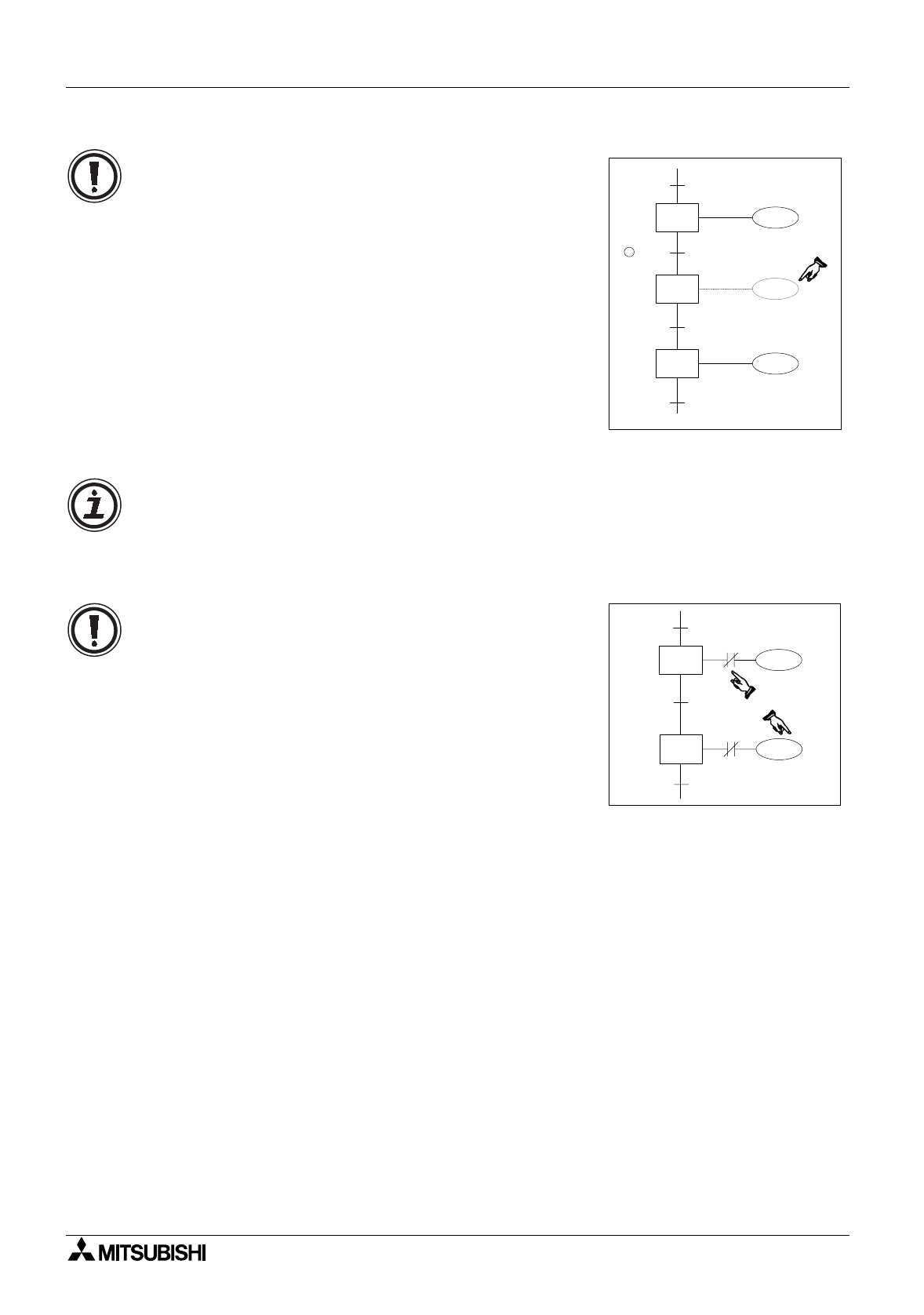
FX Series Programmable Controllers STL Programming 3
3-8
T001
S 30
S 31
T001
S 32
K20
T001
K50
T001
Y11
S 30
S 31
Y10
Y10
Y11
• When an STL step transfers control to the next STL
step there is a period (one scan) while both steps
are active. This can cause problems with dual coils;
particularl
y
timers.
If timers are dual coiled care must be taken to
ensure that the timer operation is completed durin
g
the active STL step.
If the same timer is used in consecutive steps then it
is possible that the timer coil is never deactivated
and the contacts of the timer will not be reset
leadin
g
to incorrect timer operation.
The example opposite identifies an unacceptable
use of timer T001. When control passes from S30 to
S31 T001 is not reset because its coil is still ON in
the new step.
Note:
As a step towards ensurin
g
the correct operation of the dual timers the
y
should not be used in consecutive STL steps.
Followin
g
this simple rule will ensure each timer will be reset correctl
y
before its next
operation.
• As alread
y
mentioned, durin
g
the transfer between
steps, the current and the selected steps will be
simultaneousl
y
active for one pro
g
ram scan. This
could be thou
g
ht of as a hand over or handshakin
g
period.
This means that if a user has two outputs contained
in consecutive steps which must NOT be active
simultaneousl
y
the
y
must be interlocked. A
g
ood
example of this would be the drive si
g
nals to select
a motors rotation direction. In the example Y11 and
Y10 are shown interlocked with each other.


















